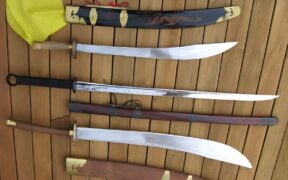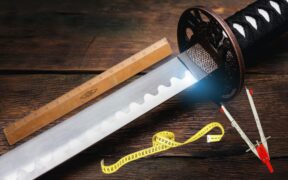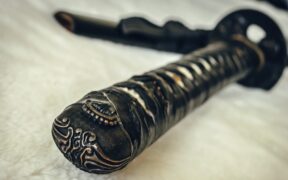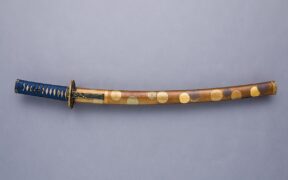Our content features commercial links to our products, committed to transparent, unbiased, and informed editorial recommendations. Learn More
What is the Perfect Japanese Sword Length?
NO AI USED This Article has been written and edited by our team with no help of the AI
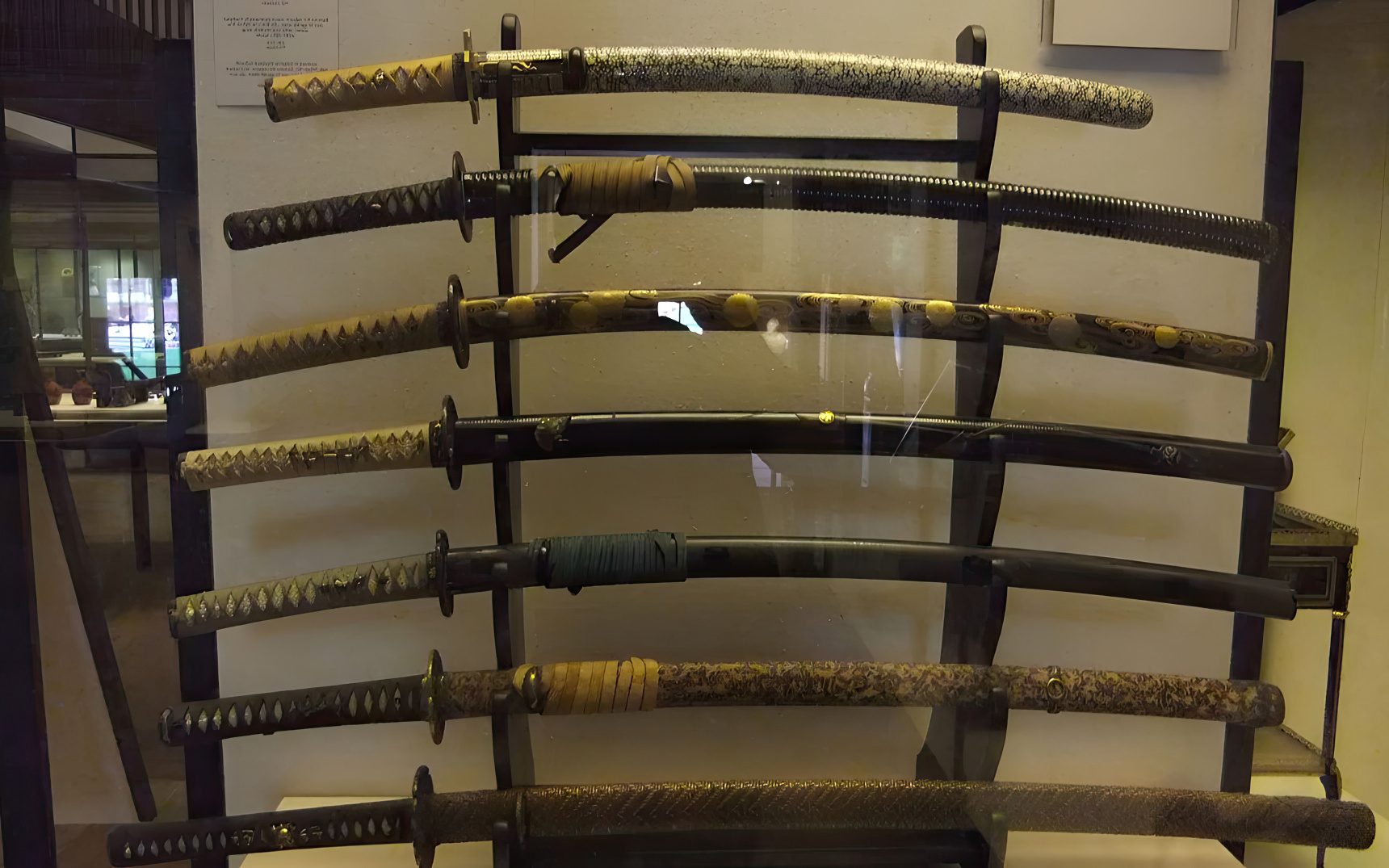
If you are among the many admirers and enthusiasts of magnificent Japanese swords, you may have wondered how long the blades you want to purchase should be. You’ve come to the right place if you’ve been looking for a single, definitive resource detailing every Samurai sword length.
This article will give a precise historical and traditional overview of all sword lengths in the Japanese arsenal. We will include only the overall length of the swords, from the handle (tsuka) to the tip of the blade (nagasa). The Japanese sword lengths will also be explained so you can find the Japanese sword length that best suits you.
Understanding Japanese Sword Lengths
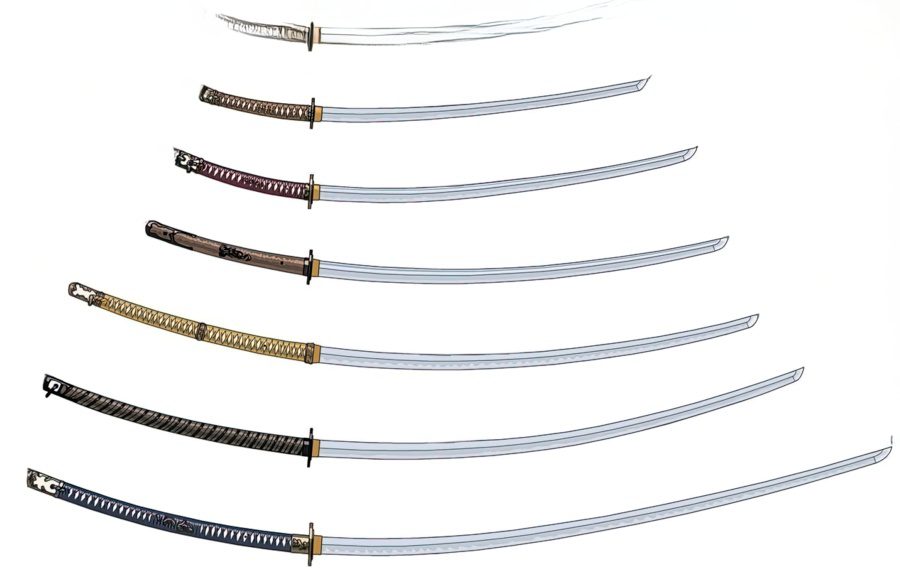
It’s possible to find Japanese swords in a wide range of lengths. There are single and double-handed swords and enormous greatswords that resemble polearms. Some have straight blades, but the vast majority have a curvature. The length of a Japanese sword can be broken down into three distinct groups.
They are differentiated and separated by shaku, a Japanese unit for measuring height. The modern shaku is slightly different than the historical one, but each shaku represents roughly 12 inches (30.3 cm). Here are the types of Japanese sword lengths.
- Daito (Long Swords) – more than two shaku (24 inches / 60.6 cm)
- Shoto (Short Swords) – between one and two shaku (12 inches / 30.3 cm)
- Tanto (Daggers or Knives) – less than one shaku (12 inches / 30.3 cm)
In addition to the standard sword length and width, there is also a phrase for designating variants that are slightly longer or shorter than the traditional size of a Japanese sword. These are the two definitions used to describe them:
- O (meaning great in Japanese) – when the prefix O is added before a Japanese sword, it will refer to a slightly larger overall size than its original dimensions—for example, O-Katana, O-Wakizashi, or O-Tanto.
- Ko (meaning small in Japanese) – when the prefix Ko is added before a Japanese sword, it will describe the opposite, meaning slightly smaller than the original. For example, Ko-Dachi, or Ko-Katana.
The correct sword length is measured and calculated by the blade length from the blade’s tip to the part of the blade where the full-tang (nakago), 𑁋the metal piece that goes inside the handle𑁋part begins. This is also called munemachi in Japanese, which is just above the collar (habaki) of the guard (tsuba).
Some people use a different grouping to describe the Japanese swords over three shaku as Odachi. Even the great Samurai Miyamoto Musashi referred to the Katana as a long sword but the Odachi as an extra-long sword.
However, we will only include the overall sword size𑁋the length of the blade, including the handle𑁋to keep this list brief and beginner-friendly. On this list, a single set number will be used as a standard, and the overall sword length can be about six inches (15 cm) longer or shorter than the set number.
1. Katana Sword Length
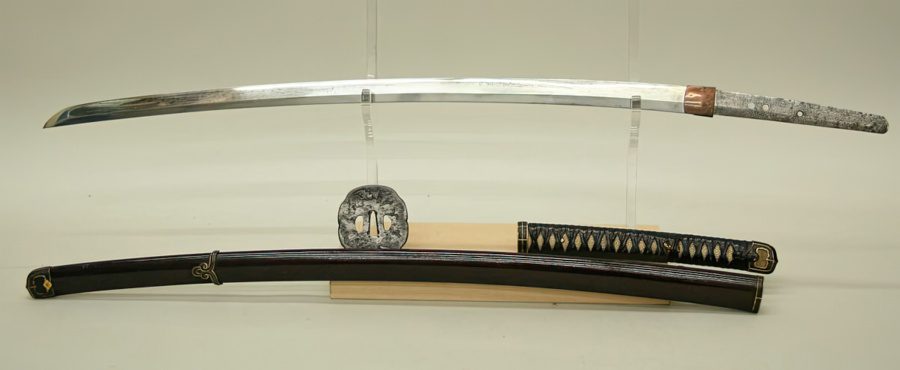
- 39 Inches (100 cm)
- Blade Length – 29 inches (74 cm)
- Handle Length – 10 Inches (25 cm)
The Japanese Katana is known for its beautiful form and unique length, giving it an array of uses. Its single-edged, curved blade gives it a good mix of reach and maneuverability. The length of the Katana gives the Samurai power, allowing them to strike accurately from a distance, make quick slashes in close combat, and smooth transitions between attacking and defending.
The length of the Katana is ideal for becoming a part of the fighter’s body and soul, a characteristic that makes it the most popular and sought-after sword in the world. Due to its balanced overall length, it is also a perfect Japanese sword to start training with.
When a Katana comes together with a Wakizashi or a Tanto, it is called a Daisho Set. It was the symbolic armament of the Samurai during the peaceful Edo period that lasted until the latter half of the 19th century.
2. Wakizashi Sword Length
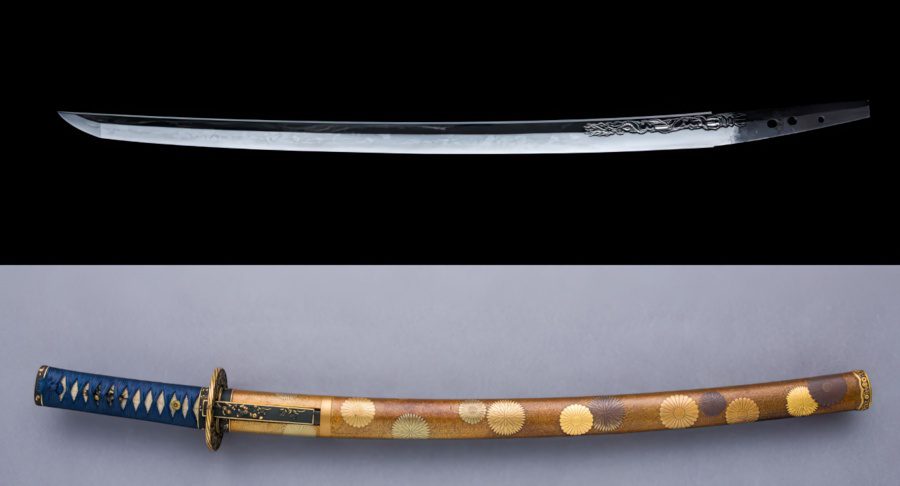
- 21 Inches (53 cm)
- Blade Length – 15 Inches (38 cm)
- Handle Length – 6 Inches (15 cm)
The Wakizashi is a shorter sword and a companion of the Katana but with special benefits on the battlefield. Its small size allows it to be used quickly and with agility in tight areas, adding to the Katana’s range. The Wakizashi was so versatile that it allowed Samurai to use two weapons simultaneously, make precise thrusts, and move easily in close proximity. This made it an essential weapon for close-quarters fighting and self-defense.
3. Tanto Sword Length
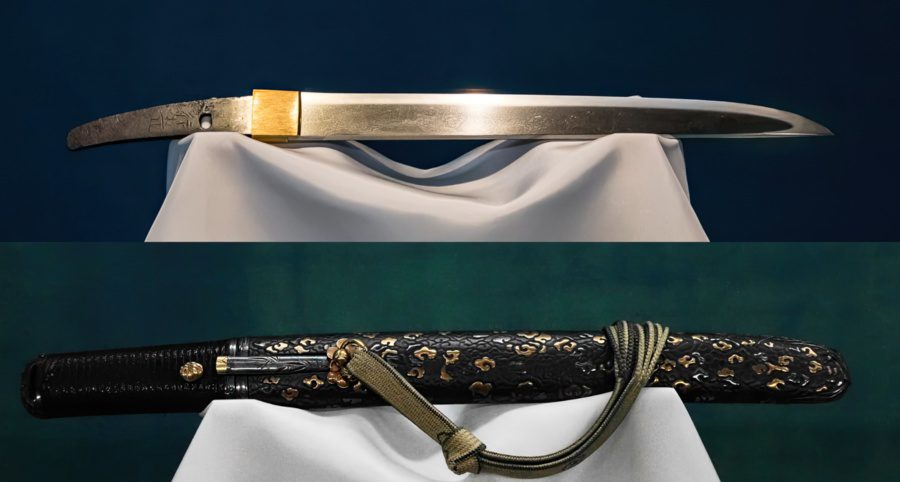
- 12 Inches (30 cm)
- Blade Length – 8 Inches (20 cm)
- Handle Length – 4 Inches (10 cm)
The Japanese Tanto, a dagger-like weapon, has the shortest blade length, which gives it unique benefits. Its small size lets the Samurai hit quickly and accurately in close combat, giving him many options in tight spaces. The high-quality blade length of the Tanto made it useful for self-defense, piercing armor, and seppuku rituals. It was also a sign of status and respect for the Samurai warrior.
4. Nodachi / Odachi Sword Length
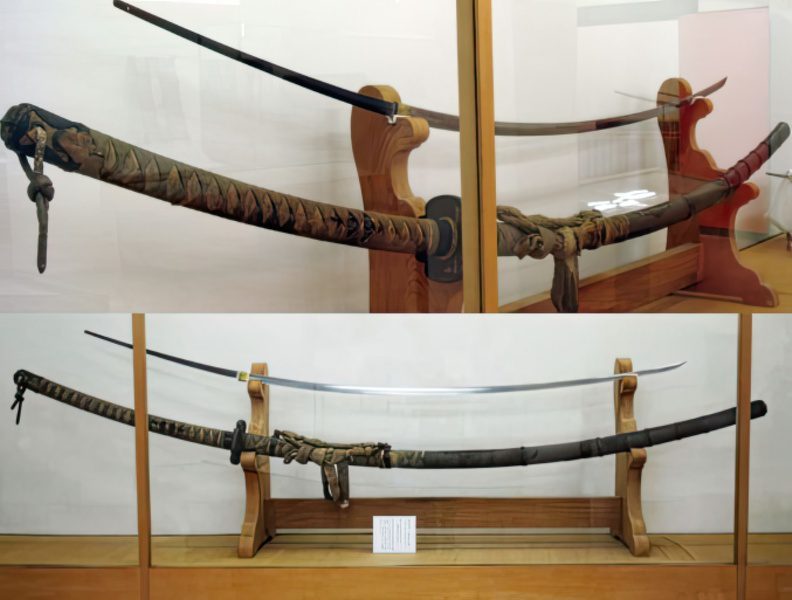
- 60 Inches (151 cm)
- Blade Length – 46 Inches (116 cm)
- Handle Length – 14 Inches (35 cm)
The Japanese Nodachi or Odachi, meaning battlefield or great weapon, is a huge two-handed Japanese Sword. It is a powerful tool that can be used in many different ways, and its long reach allows for devastating sweeping attacks that can cut through multiple enemies and mounted troops.
The length of the Nodachi gave the Samurai a strategic edge. It was frequently used in battle during the Muromachi period, and it could break up enemy formations, protect against long-range attacks, and make enemies fear the warrior’s power and expertise. It is the Samurai sword which is considered to be the largest and longest in their arsenal of weapons.
5. Kodachi Sword Length

- 24 Inches (60 cm)
- Blade Length – 18 Inches (45 cm)
- Handle Length – 6 Inches (15 cm)
The Kodachi is on the opposite end of the length scale from the previously mentioned Nodachi. Kodachi blades were smaller than Kamakura-era weapons, called Tachi. During this time in Japan, the Katana didn’t exist yet, and the Samurai used the Tachi with a smaller Kodachi sword. While it resembles the Wakizashi, it is separate from one.
Tachi Sword Overall Length
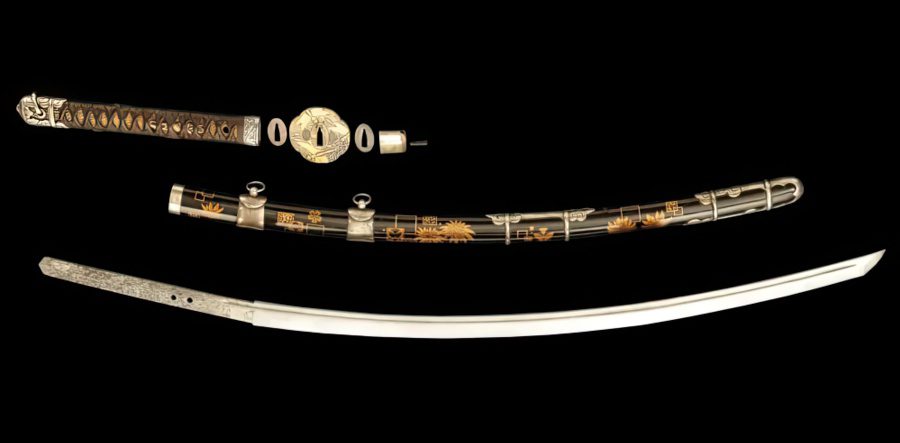
- 32 Inches (80 cm)
- Blade Length – 23 Inches (60 cm)
- Handle Length – 9 Inches (20 cm)
The Japanese Tachi is an old and traditional longsword used before the famous Katana. It has a blade about the same length as the Katana, giving it much flexibility in battle. Its long reach made it possible to strike effectively on horseback and make precise cuts in open battle. The length of the Tachi made it a great tool for Samurai. It let them make powerful swings, quick cuts, and strategic moves that showed off their skill on the battlefield.
6. Nagamaki Sword Length
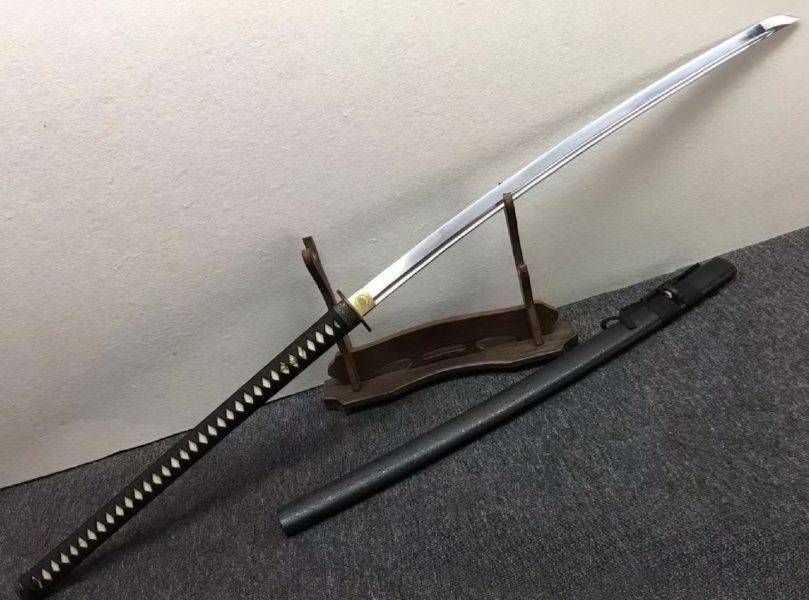
- 51 Inches (130 cm)
- Blade Length – 28 Inches (70 cm)
- Handle Length – 23 Inches (60 cm)
The length of the Japanese Nagamaki, a combination sword with a long blade and handle, gives it a lot of versatility. It let Japanese Samurai warriors fight from far or close range, cutting and slashing their opponents with deadly force.
The Nagamaki’s long reach made it easier to have control on the battlefield, gave it an edge against armored enemies, and a strong range advantage against cavalry, making it a favorite of the skilled Samurai fighters.
7. Chokuto Sword Length
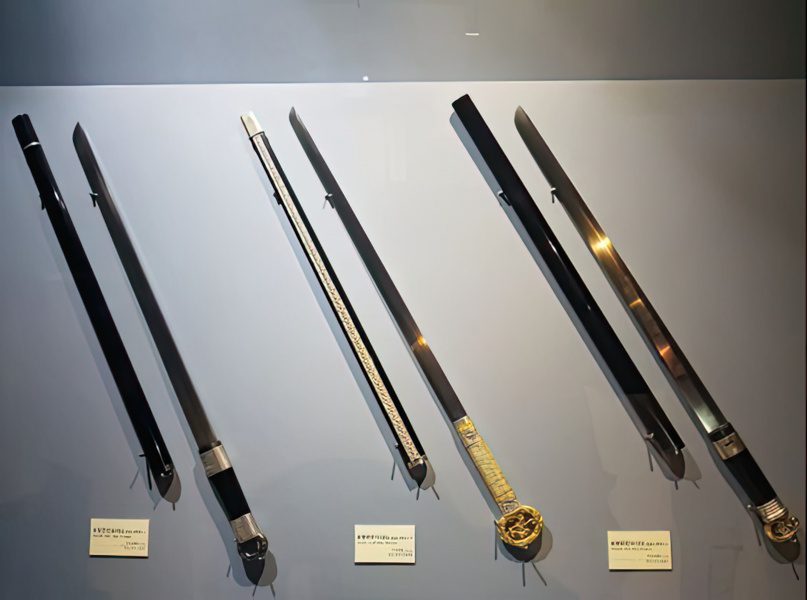
- 31 Inches (80 cm)
- Blade Length – 23 Inches (60 cm)
- Handle Length – 8 Inches (20 cm)
The Chokuto, one of the first Japanese swords, had a straight blade with a single edge. It looks like the Chinese Tang Heng Dao, which may have been a source of contemporary inspiration during the Heian period of Japan. They are famous because they are swords often found in Japanese folklore.
The Chokuto is shorter than other swords because blade-making in Japan was less advanced than in the later stages of its history compared to the period of the weapon’s creation.
8. Tsurugi Sword Length
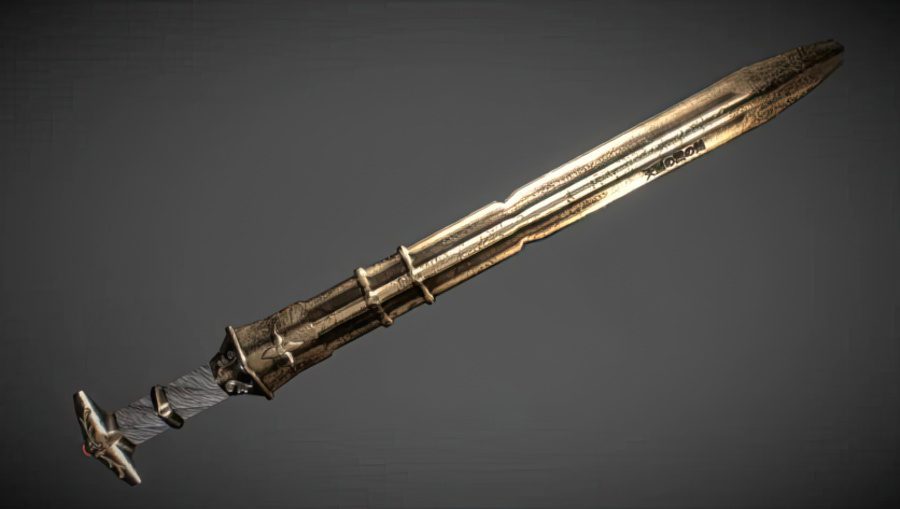
- 20 Inches (50 cm)
- Blade Length – 15 Inches (38 cm)
- Handle Length – 5 Inches (12 cm)
The Tsurugi is one of the oldest swords in Japan and one of the rarest, with a straight and double-edged blade. This makes it very powerful for slashing but also thrusting attacks. Many warriors used the blade, but with time it was linked with religious activities such as Buddhism and Shinto spirits.
That is why the length has stayed the same, and even today is a tool connected with these ancient religious ideals. There are versions of this sword that are much larger than its usual length, mainly because double-edged Japanese swords are rare.
9. Ninjato Sword Length
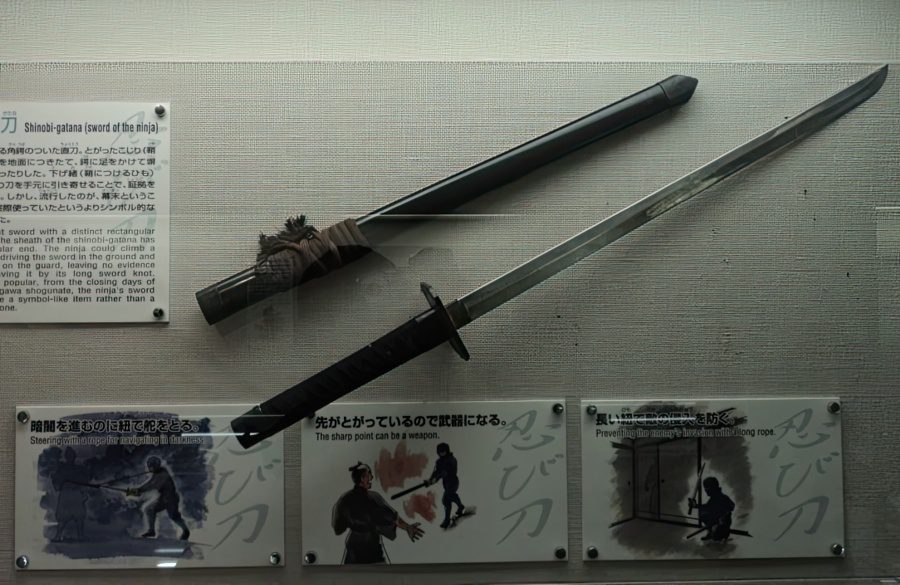
- 24 Inches (60 cm)
- Blade Length – 15 Inches (38 cm)
- Handle Length – 9 Inches (22 cm)
It is unknown if the Ninjato is a real or fictional modern weapon because the Ninja could have destroyed any evidence of its existence. This fact makes it one of the most popular swords in the world, as it is shrouded with much mystery. Its length suits close-quarter combat, allowing lethal slashes even in a medium range.
It is one of the most popular swords used in Ninja martial arts known as Ninjutsu or as part of survival techniques. An ideal Ninjato should have a wider scabbard (saya) to fool the enemy and give the Ninja time to draw the sword before the enemy resulting in a quick victory.
10. Uchigatana Sword Length
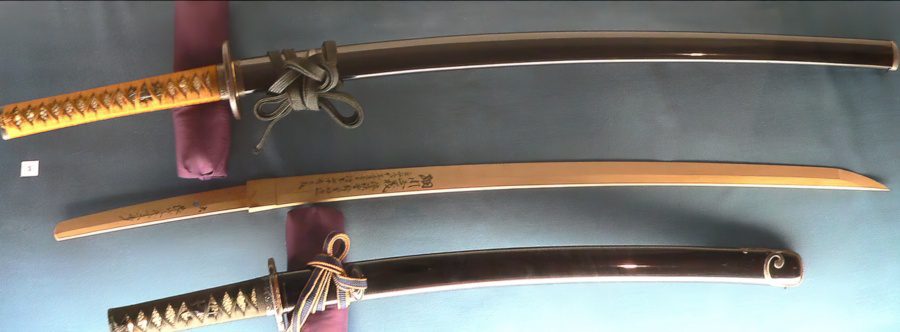
- 35 Inches (90 cm)
- Blade Length – 27 Inches (70 cm)
- Handle Length – 8 Inches (20 cm)
Uchigatana swords are the direct predecessor of the popular modern Japanese Katana and the successor to the previous Tachi sword. At first, it had a shorter size and was easy to carry with the blade edge tip (kissaki) pointing up. It grew in size while still possessing the same design and carrying style.
During the Sengoku Era, a period of civil wars and unrest, Japanese sword swordsmiths were inspired to make swords with similar blades but, at the same time, different. The result was the modern Katana, a sword that is easy to pull out of its sheath, can be carried daily, and can be used with one or two hands.
11. Shikomizue Sword Length
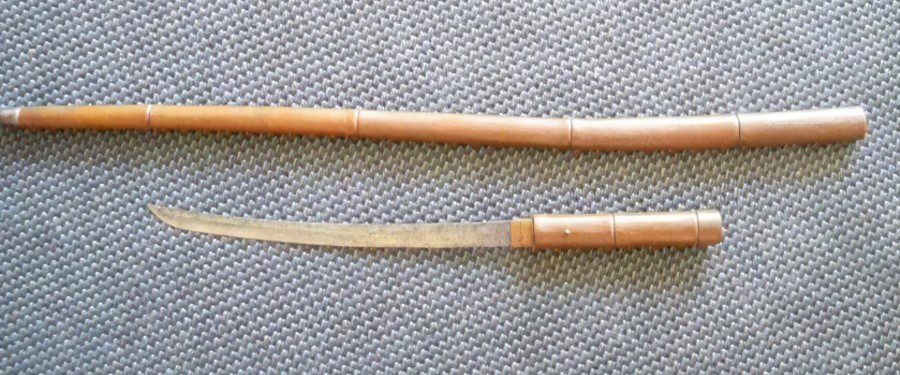
- 30 Inches (75 cm)
- Blade Length – 22 Inches (55 cm)
- Handle Length – 8 Inches (20 cm)
The Shikomizue is a Japanese walking stick or sword-stick. Some blades are very short, almost like daggers, but some are as long as a Japanese daito. It was a weapon used for secret missions, and its length made it well-balanced enough to use in tight areas or for blade-to-blade combat.
12. Shirasaya Sword Length
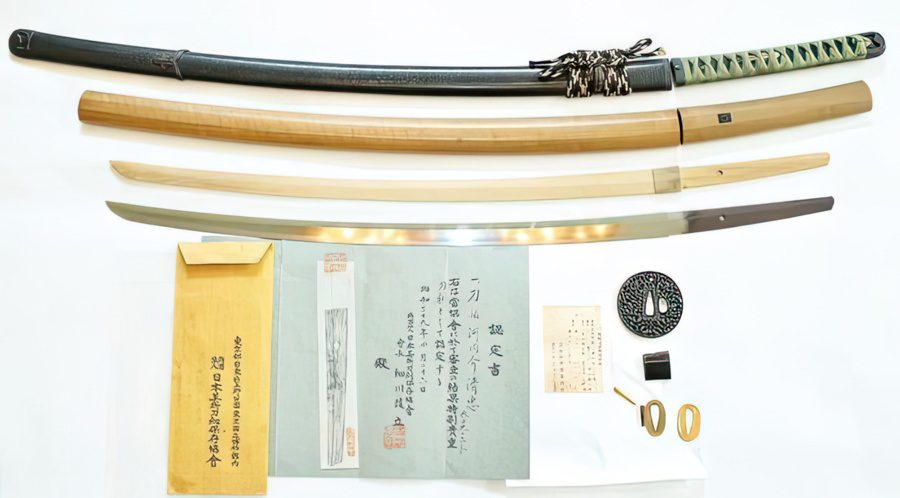
- 39 Inches (100 cm)
- Blade Length – 29 Inches (74 cm)
- Handle Length – 10 Inches (25 cm)
Shirasaya is a Japanese Katana mount or scabbard, essentially a Katana blade carried in a traditional and valued white saya. Although sometimes it is referred to as just a Shirasaya, a special type of sword, we wanted to include its overall length to avoid confusing it with other Japanese swords.
13. Naginata Sword Length
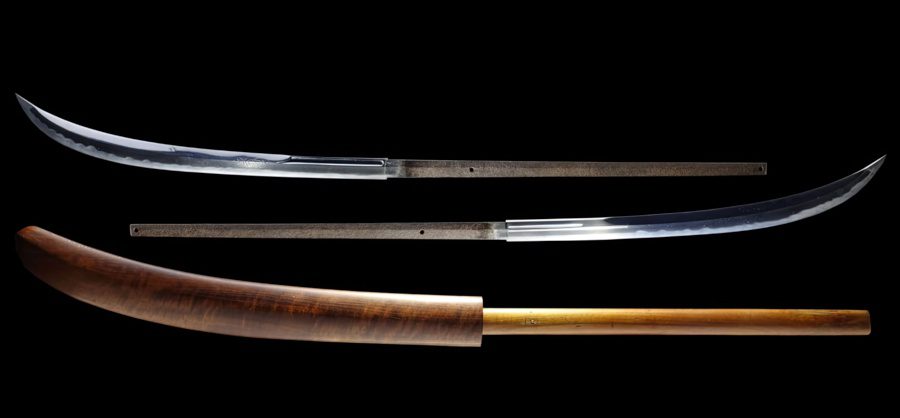
- 87 Inches (220 cm)
- Blade Length – 24 inches (60 cm)
- Handle Length – 63 inches (160 cm)
The Japanese Naginata is a pole sword whose blade functions as both a polearm and a sword. Its length lets warriors fight their enemies from a safe distance using wide cuts and thrusts. The Naginata’s long reach greatly benefited skilled Samurai warriors in battle, allowing them to disarm opponents, take control on the battlefield, and stop cavalry charges.
It is the largest and longest Japanese sword, next to the Nodachi, making it an effective tool for experienced warriors. Its average length could sometimes be larger than its user wielding it in battle.
14. Sai Sword Length
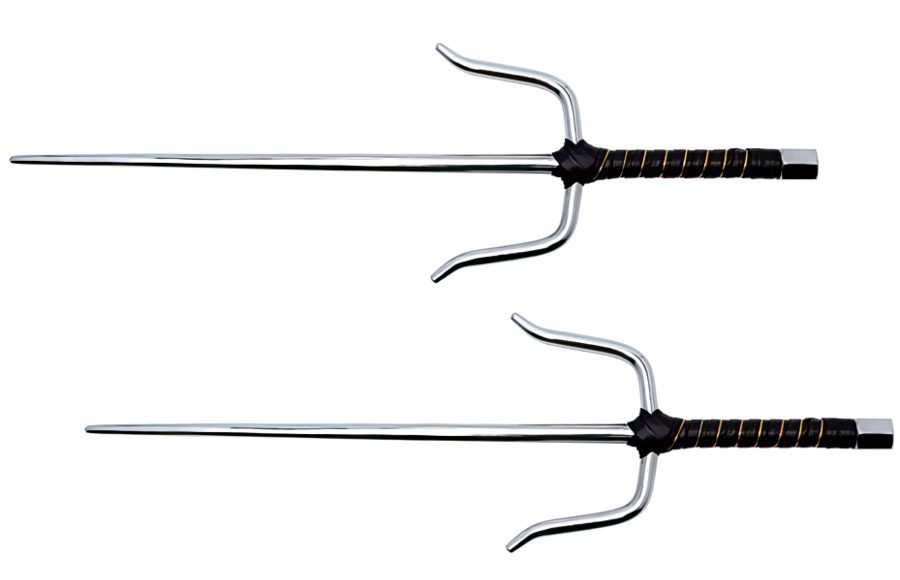
- 16 Inches (40 cm)
- Blade Length – 12 inches (30 cm)
- Handle Length – 4 inches (10 cm)
The Sai sword is another popular sword linked in modern media with the Japanese Ninja. It is a blade that is short in size and has been used historically throughout some of the Japanese provinces as a blunt melee tool to fight crime and catch criminals. Its smaller and shorter length allows it to be used as a dual-wielded weapon.
15. Bokken Sword Length
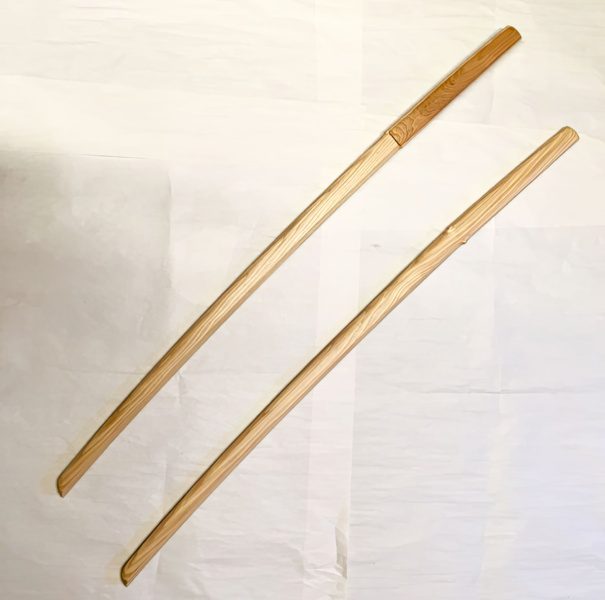
- 39 Inches (100 cm)
- Blade Length – 29 Inches (74 cm)
- Handle Length – 10 Inches (25 cm)
A Bokken is a sword made of wood used to train in Japanese martial arts. It looks, feels, and has the length of a Katana sword and is a safe and useful tool for learning sword techniques. The bokken lets people practice fighting without putting themselves in danger, and it serves as a good way to find one’s ideal sword length. Several lengths for these training swords are chosen to suit the person’s height.
16. Iaito Sword Length

- 39 Inches (100 cm)
- Blade Length – 29 Inches (74 cm)
- Handle Length – 10 Inches (25 cm)
Another form of a training and practice sword used in the Japanese martial art of Iaido is the Iaito. It looks and is the length of a standard Katana carbon steel but isn’t sharpened and lacks a cutting edge. It was made for training and practicing form and let people focus on their historical Samurai forms and skills without fearing injury from a real blade.
17. Shinai Sword Length
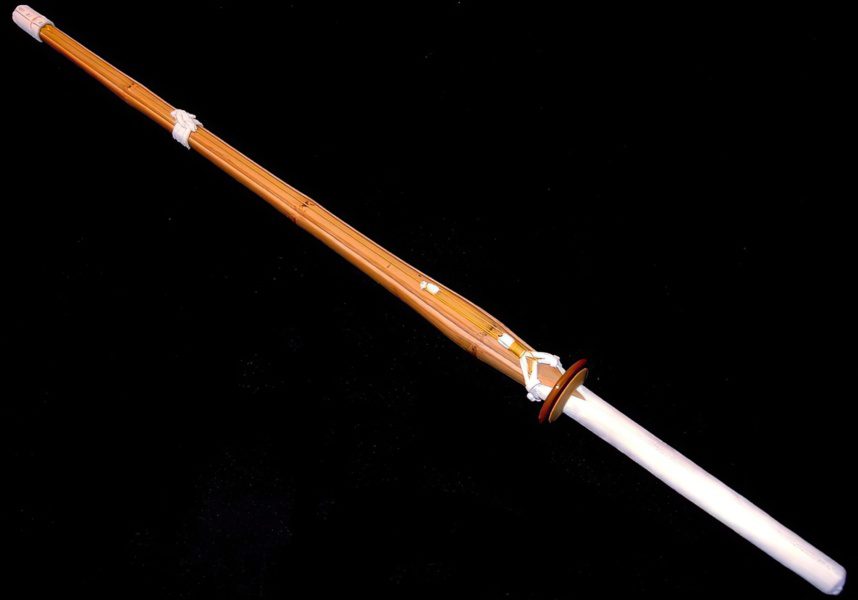
- 47 Inches (120 cm)
- Blade Length – 35 Inches (89 cm)
- Handle Length – 12 Inches (30 cm)
Shinai is the name of the Japanese sword made of bamboo that is used to teach sword martial arts. It has a high level of both thickness and flexibility, making it a favorite sword blade for many practitioners of Kendo. Though slightly bigger than the laito and bokken, they make excellent training tools.
